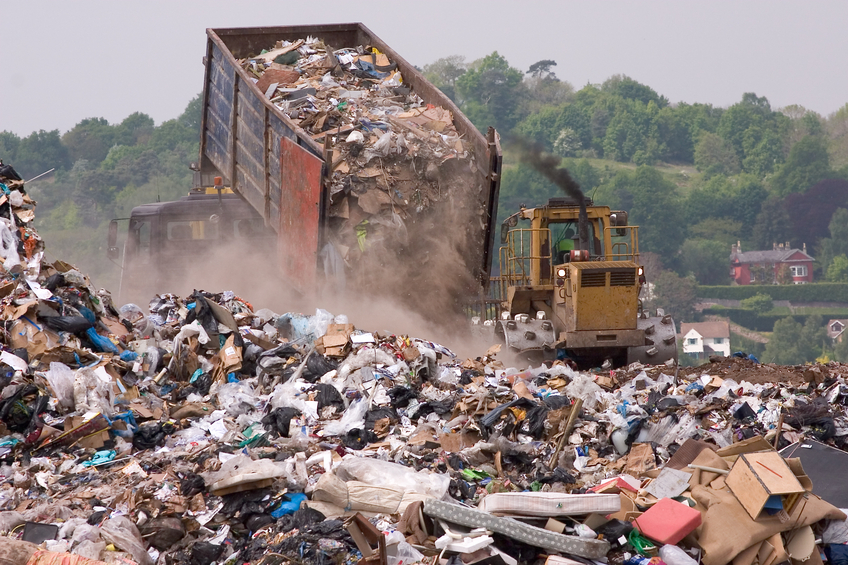Wastewater Engineering 12 PDH Discount Package 3
Courses in this Package
An Introduction to Domestic Wastewater Treatment (C02-029)
An Introduction to Hydraulic Design of Sewers (C02-031)
An Introduction to Preliminary Wastewater Treatment (C02-033)
An Introduction to Primary Wastewater Treatment (C02-034)
An Introduction to Sludge Handling, Treatment and Disposal (C04-021)

This online engineering PDH course will introduce you to the basics of domestic wastewater treatment. You will learn about preliminary measures, pretreatment, primary, secondary and advanced treatment processes, and sludge treatment and disposal. Approximate performance data for different treatment processes will be included, as well as comments on operational characteristics of processes. Basic design considerations for selecting treatment processes and sizing plants will be discussed. Normal domestic, non-domestic and industrial wastewater characteristics will be considered, as will the impact of stormwater on domestic wastewater treatment plants. Factors to be considered in site selection will be addressed.
This 2 PDH online course is intended for engineers and other design and construction professionals interested in gaining an understanding of the process technologies, equipment and design practices needed to treat domestic wastewater and treat and dispose of the resultant sludge.
This PE continuing education course is intended to provide you with the following specific knowledge and skills:
- Learning the design and operational objectives of domestic wastewater treatment plants
- Learning about the major factors to consider in siting domestic wastewater treatment plants, including topography, availability of a suitable discharge point, working and public areas, and community master plan considerations
- Learning about typical compounds that inhibit biological wastewater treatment processes and how they can be mitigated
- Learning the definitions and characteristics of preliminary, primary, secondary and advanced domestic wastewater treatment processes
- Learning about preliminary treatment processes including equalization, neutralization, temperature adjustment, nutrient addition, screening and grit removal
- Learning about primary treatment processes including sedimentation and dissolved air flotation
- Learning about secondary treatment processes including activated sludge, aerated ponds, aerobic-anaerobic ponds, trickling filters, chemical oxidation, chemical mixing flocculation and clarification, gravity filtration, pressure filtration, dissolved air flotation with chemicals, and anaerobic contact
- Learning about advanced treatment processes including advanced carbon adsorption, micro straining filtration, land treatment, subsurface disposal, and groundwater recharge
- Learning about sludge treatment processes including anaerobic digestion, aerobic digestion, autoclaving, elutriation, vacuum filtration, centrifugation, sand beds and presses
- Learning about sludge disposal including incineration, wet oxidation, land disposal and sanitary landfills
In this professional engineering CEU course, you need to review the course document titled, "An Introduction to Domestic Wastewater Treatment".
Upon successful completion of the quiz, print your Certificate of Completion instantly. (Note: if you are paying by check or money order, you will be able to print it after we receive your payment.) For your convenience, we will also email it to you. Please note that you can log in to your account at any time to access and print your Certificate of Completion.

This online engineering PDH course will introduce you to the principles of hydraulic design of sanitary sewers. You will learn how to calculate quantities of wastewater, the approach to design of gravity and depressed sewers, required pumping capacity, hydrogen sulfide gas control, and sewer system features such as manholes, building connections, cleanouts, and pumping stations and equipment.
This 2 PDH online course is applicable to civil engineers and construction professionals seeking to understand the fundamentals of design of sewer systems. This course will provide civil engineers and construction professional an introduction to the terminology, fundamentals and methodologies for the hydraulic design of sanitary sewer systems.
This PE continuing education course is intended to provide you with the following specific knowledge and skills:
- Learning how to evaluate the contributing population for the sewer system
- Learning about Average Daily Flow, Average Hourly Flowrate, Peak Diurnal Flowrate, and Extreme Peak Flowrate
- Learning how to calculate extreme peak flowrates from average flowrates
- Learning how to accommodate groundwater infiltration into the sewer system when designing the sewer system
- Learning how the Manning formula is used in design of gravity sewers
- Learning about acceptable values for the roughness coefficient in the Manning formula
- Learn about acceptable design velocities for gravity sewers
- Learning the 10 parameters that need to be identified and quantified after a preliminary layout for the system has been established
- Learning the importance of critical flow in gravity sewer design
- Learning about velocity and flow analysis of depressed sewers
In this professional engineering CEU course, you need to review the course document titled, "An Introduction to Hydraulic Design of Sewers".
Upon successful completion of the quiz, print your Certificate of Completion instantly. (Note: if you are paying by check or money order, you will be able to print it after we receive your payment.) For your convenience, we will also email it to you. Please note that you can log in to your account at any time to access and print your Certificate of Completion.

This online engineering PDH course will introduce you to processes and equipment for preliminary treatment of wastewater. You will be introduced to descriptions, functions and design considerations for bar screens, comminuting devices, grit chambers, proportional weirs, Parshall and Venturi flumes, dissolved air flotation systems, and flocculation methods. You will learn how the preliminary treatment process works together with the primary, secondary, tertiary and sludge handling processes to form a complete wastewater treatment plant.
This 2 PDH online course is intended for civil, environmental and chemical engineers as well as construction professionals seeking an introduction to preliminary wastewater treatment.
This PE continuing education course is intended to provide you with the following specific knowledge and skills:
- Understanding the characteristics and design basis for bar screens
- Understanding the parameters for sizing screen channels
- Learning how to select and size screening bars
- Understanding the function and basis of design of comminuting device installations
- Learning the fundamentals of grit chambers
- Learning about horizontal-flow grit chambers
- Learning how proportional weirs, Parshall flumes and Venturi flumes are incorporated into grit chambers
- Learning about dissolved air flotation
- Understanding the methods and design factors for wastewater flocculation
- Learning how to calculate power requirements for flocculation units
In this professional engineering CEU course, you need to review the course document titled, "An Introduction to Preliminary Wastewater Treatment".
Upon successful completion of the quiz, print your Certificate of Completion instantly. (Note: if you are paying by check or money order, you will be able to print it after we receive your payment.) For your convenience, we will also email it to you. Please note that you can log in to your account at any time to access and print your Certificate of Completion.

This online engineering PDH course will introduce you to processes and equipment for primary treatment of wastewater. You will be introduced to descriptions, functions and design considerations for sedimentation tanks and clarifiers, chemical precipitation, and Imhoff tanks. You will learn how the primary treatment processes works together with the preliminary, secondary, tertiary and sludge handling processes to form a complete wastewater treatment plant.
Wastewater treatment is usually characterized as consisting of four sequential processes: preliminary, primary, secondary and tertiary treatment.
This 2 PDH online course is intended for civil, environmental and chemical engineers as well as construction professionals seeking an introduction to primary wastewater treatment.
This PE continuing education course is intended to provide you with the following specific knowledge and skills:
- Understanding the function of primary sedimentation
- Learning about sedimentation tank design parameters
- Learning about detention time for sedimentation tanks and clarifiers
- Learning about weir loading rates for sedimentation tanks
- Learning about sludge and scum collection for rectangular and circular sedimentation tanks
- Learning how to calculate sedimentation tank size
- Learning about chemical precipitation using aluminum and iron salts, lime, and polyelectrolytes
- Learning how to calculate sludge production using chemical addition in primary sedimentation
- Understanding the functions and features of Imhoff tanks
- Understanding the typical characteristics of domestic sewage sludge
In this professional engineering CEU course, you need to review the course document titled, "An Introduction tp Primary Wastewater Treatment".
Upon successful completion of the quiz, print your Certificate of Completion instantly. (Note: if you are paying by check or money order, you will be able to print it after we receive your payment.) For your convenience, we will also email it to you. Please note that you can log in to your account at any time to access and print your Certificate of Completion.

This online engineering PDH course will introduce you to processes and equipment for handling, treating and disposing of sludge produced by wastewater treatment plants. It covers sludge pumping, thickening, conditioning, dewatering, digestion, storage and final disposition. It also discusses loading parameters for gravity thickeners and operational parameters for air flotation thickeners. This course will provide guidelines for chemical conditioning of sludge; and advantages, disadvantages and shortcomings of filter presses, basket centrifuges, and solid bowl decanter centrifuges. Finally it illustrated the design parameters for aerobic and standard and high-rate anaerobic sludge digesters.
This 4 PDH online course is intended for civil, environmental and chemical engineers as well as construction professionals seeking an introduction to sludge handling, treatment and disposal.
This PE continuing education course is intended to provide you with the following specific knowledge and skills:
- Identifying the characteristics, advantages and disadvantages of the four primary types of sludge pumps
- Recommending pump types for primary, chemical precipitated, trickling-filter, activated, thickened and concentrated sludge
- Learning about gravity and flotation thickening of sludge, as well as the mass loading guidelines for gravity thickeners
- Learning about the operational parameters for flotation thickening of sludge
- Learning how chemical conditioning is used to improve sludge dewaterability and how heat can improve dewaterability of sludge
- Learning about sludge dewatering using a belt filtration press
- Understanding the advantages, disadvantages, shortcomings and solutions to problems that may arise with belt filter presses
- Understanding the design guidelines for sludge drying beds
- Learning about sludge moisture reduction using vacuum filtration
- Learning about sludge dewatering using basket centrifuges or using solid bowl centrifuges
- Understanding the advantages, disadvantages, shortcomings and solutions to problems that may arise with solid bowl decanter centrifuges
- Learning about plate-and-frame filter presses, as well as manual, semi-automatic and automatic controls for filter presses
- Learning about continuous and intermittent batch aerobic sludge digestion, as well as anaerobic sludge digestion
- Understanding the design parameters for aerobic digestion using air, as well as the design parameters for standard- and high-rate anaerobic digesters
In this professional engineering CEU course, you need to review the course document titled, "An Introduction to Sludge Handling, Treatment and Disposal".
Upon successful completion of the quiz, print your Certificate of Completion instantly. (Note: if you are paying by check or money order, you will be able to print it after we receive your payment.) For your convenience, we will also email it to you. Please note that you can log in to your account at any time to access and print your Certificate of Completion.